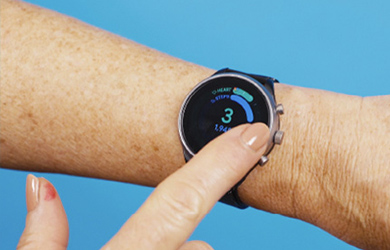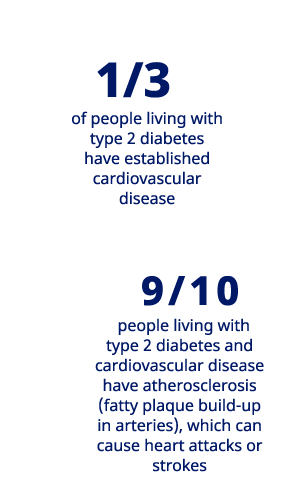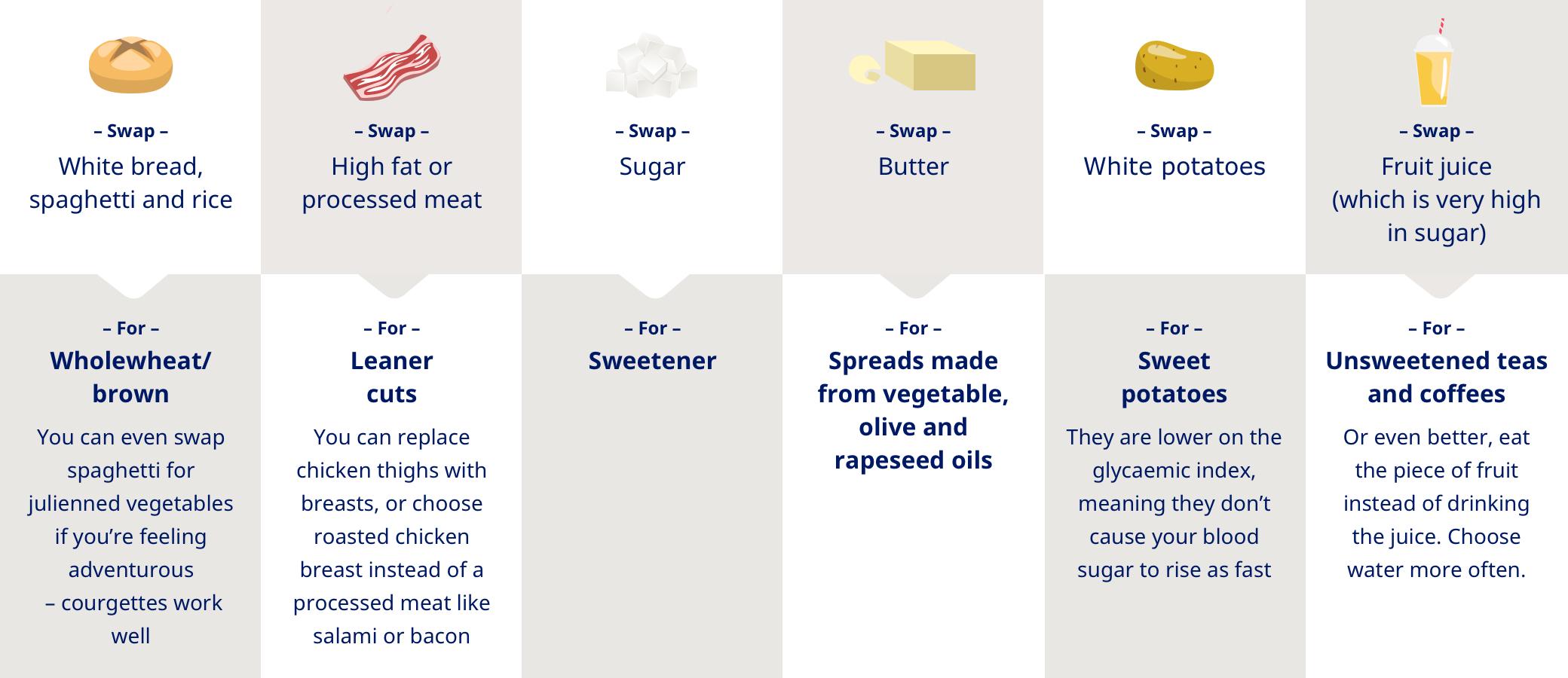
4 tips for better weight management
Being overweight (or carrying excess body weight) can increase your risk of developing type 2 diabetes and cardiovascular disease.
Meet Adrian who was diagnosed with type 2 diabetes
Type 2 diabetes is a chronic disease that occurs when your body cannot make enough insulin and cannot effectively use the insulin it makes. This is called insulin resistance, and it develops over months or even years.1,2
Type 2 diabetes (also known as adult onset diabetes) is when your body can’t make enough insulin or when your body can’t use the insulin it makes correctly (insulin resistance). As a consequence, too much glucose stays in your blood. The job of insulin is to unlock the doors to your cells and let the glucose in.

If you’ve just been diagnosed with type 2 diabetes, you can expect to live an active and independent life if you correctly manage your disease. To do so, you will need to change the way you care for your health and plan carefully for specific activities and occasions.
Learning to balance your diet, physical activity and blood glucose levels and adapt to different circumstances will help you live life to the fullest and avoid serious health problems down the line. 3

People with type 2 diabetes are 2-4 times more likely to have a heart attack or stroke compared to someone living without diabetes.13,14
Learn how you can reduce the risk.
Type 2 diabetes develops gradually, so you may not even notice the symptoms until they become obvious. This is dangerous, as high blood glucose levels may already be damaging your body.
Some of the signs include:
The causes of type 2 diabetes are not fully understood. The chronic disease is commonly linked with being overweight as well as with family history and ethnicity. 3,6
Is type 2 diabetes genetic? Type 2 diabetes can be inherited and linked to your family history and genetics. However, environmental factors play a significant role too. A healthy diet and regular exercise will reduce your risk of developing type 2 diabetes – even if the disease runs in your family. 6
The causes of type 2 diabetes are not fully understood, but it is linked with being overweight or living with another chronic conditions like obesity, as well as with family history and ethnicity. While genes have a role to play, your lifestyle choices are also very important. A healthy diet and regular exercise will reduce your chances of developing type 2 diabetes – even if the condition runs in your family.
If you suspect that you may have type 2 diabetes, see your doctor. There are several tests that you will need to take to diagnose type 2 diabetes. The initial test is a fasting (nothing to eat or drink for 8 hours) blood glucose test. An HbA1C test may also be taken. This will measure your average blood glucose levels over the past two to three months and does not require fasting.
If your blood glucose levels are above normal, but do not confirm type 2 diabetes, a glucose tolerance test may be taken. Your fasting blood glucose level will be measured, after which you will consume a sugary drink and have your levels measured again two hours later.
Learn more about insulin, blood glucose and their effects on your body.
Type 2 diabetes develops gradually, so you may not even notice the symptoms until they become obvious. This is dangerous, as high blood glucose levels may already be damaging your body. 3
Are you at risk of developing diabetes, or do you have it already? Around 50% of people with type 2 diabetes do not know they have the disease and risk developing serious health complications.1
Knowing your risk and getting screened early are simple steps towards a longer, healthier life.
The correlation between diabetes and cardiovascular disease only heightens the need to be aware of risk factors and catch symptoms of diabetes early.
You might be wondering; how do you reduce your risk of developing type 2 diabetes? 8
We recommend:
Type 2 diabetes can be controlled with diet and exercise. If these are not enough to control your blood glucose levels, or as the disease progresses over time, you may also need to take medication.
Eating healthy when you have diabetes can be difficult but eating well means learning to make healthy choices for you – regardless of where you are or who you are with. Aim to:

Regular exercise can help you control your blood glucose levels, lose weight, and improve your physical and mental health. A slight increase in physical activity can make a huge difference. Check out these easy low-impact activities to get started:
In summary, to live an active and independent life with type 2 diabetes, you may need to change the way you care for your health through diet and lifestyle changes.
If you do have type 2 diabetes and manage your condition well, you can expect to live an active and independent life. But, you will need to make changes to the way you care for your health and plan carefully for certain activities and occasions.
Diagnosed early, type 2 diabetes may be controlled with healthy eating and exercise. Sometimes this may not be enough to control your blood glucose levels and you may need to take additional medications to help control your blood glucose. This can include tablets or injectable therapy.
Learning to balance your diet, physical activity and blood glucose levels and being able to adapt to different circumstances will help you live life to the fullest and avoid serious complications associated with type 2 diabetes. Getting the right information and support after your diagnosis is your first step towards better long-term health.
If you are living with or caring for someone with diabetes, there are also steps that you can take to help them adjust to life with this condition.
January 2024. IE23DI00250
